New Survey Finds Teachers More Pessimistic About K-12 Education
Topics including students’ social media use, absenteeism, classroom disruptions, and more explored in latest national poll
Every school year is an important one, but not every school year follows in the wake of a pandemic. Because of the learning loss sustained by many students during the pandemic, teachers must find ways to help their students catch up academically to get back on track. According to a recent survey of teachers nationwide, a majority of American educators believe they are indeed helping students catch up academically. At the same time, teachers expressed more pessimism about the profession, the direction of K-12 education, and challenges facing students than they did when surveyed in the spring, signaling a concerning shift in attitude.
To learn more about the perspective of teachers and how they are feeling in the early months of the school year, EdChoice, in partnership with Morning Consult, surveyed a nationally representative sample of K-12 educators (N=1,041) from September 23-27, 2023.
In this twelfth wave of the survey series, teachers shared their opinions on technology in the classroom, absence rate among students, school choice and more. Additionally, for the first time, we included questions looking at the academic “catch-up” for students, classroom disruptions, and student social media use in school. The link to the full report can be found here. Here’s what we learned:
1. The proportion of teachers who would promote the teaching profession decreased significantly. Only 18 percent of teachers overall are willing to promote the teaching profession, the lowest level we have observed since March of 2020. For comparison, this past May, 36 percent reported they would promote the profession. Among private school teachers, only one in four would promote being a teacher, down a striking 26 points from May. For district school teachers, even fewer are willing to promote becoming a teacher (17%).
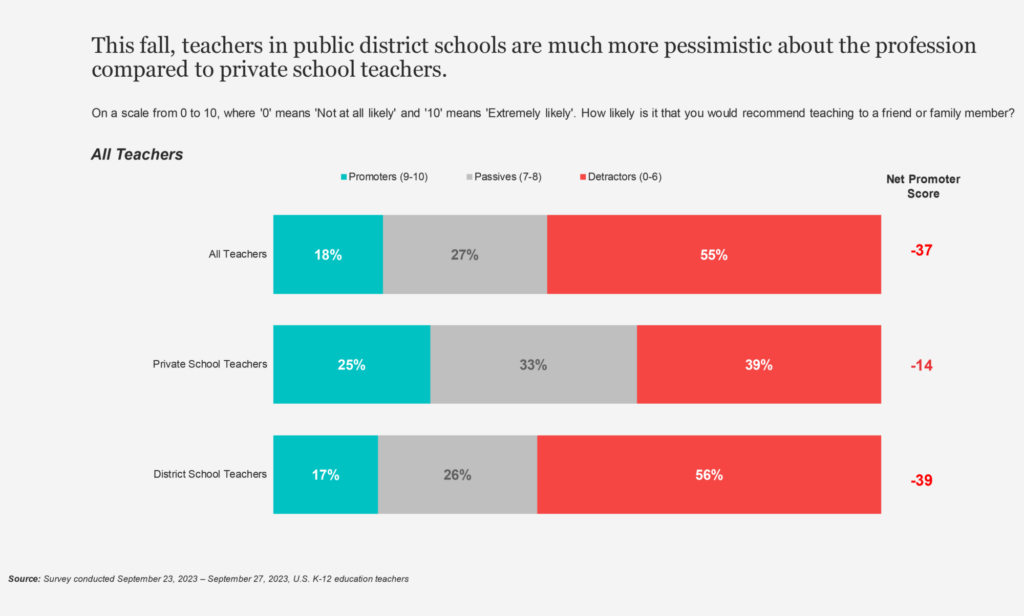
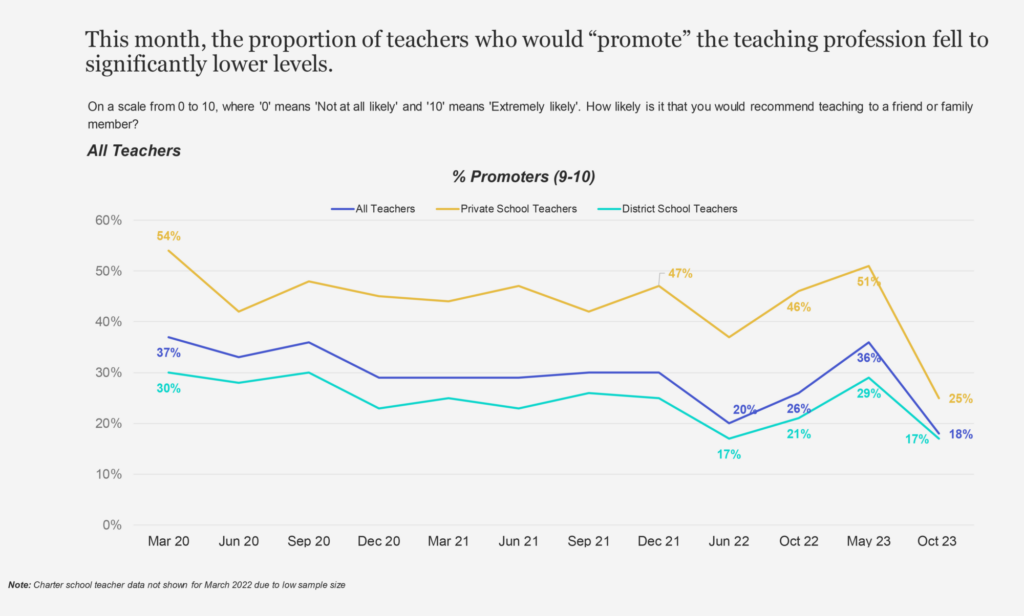
Over one-third of teachers (36%) report feeling overwhelmed which may play a role in the sharp decrease of teachers willing to promote the teaching profession. The percentage of teachers reporting feeling overwhelmed is up nine percentage points from May. Only 33 percent reported feeling in control, down six points from this spring. Additionally, teachers are more likely to report feeling dissatisfied (+8) and frustrated (+7) compared to last spring.
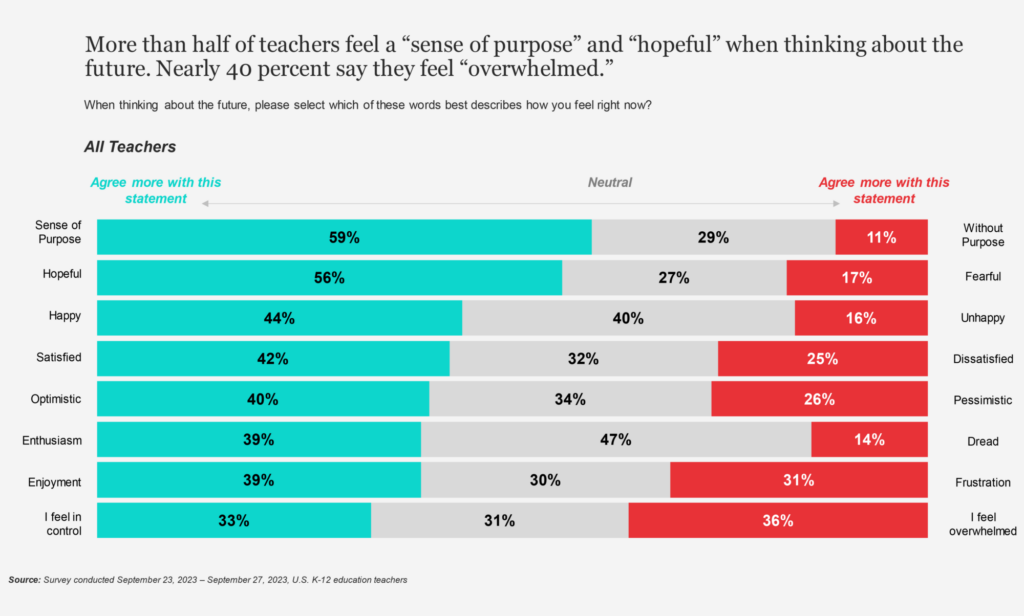
2. Teachers are feeling much less optimistic about the direction of K-12 education. Less than half of teachers (45%) feel K-12 education is headed in the right direction in their local school district. Not only does that represent an eight-point decrease from May, but it is the lowest level of optimism observed since the question was first asked in the spring of 2020. Statewide, only 32 percent of teachers feel K-12 education is headed in the right direction, down 12 points from the spring. Teachers are least optimistic about K-12 education at the national level with only one in five (22%) reporting it is headed in the right direction — a 13-point decrease from the spring.
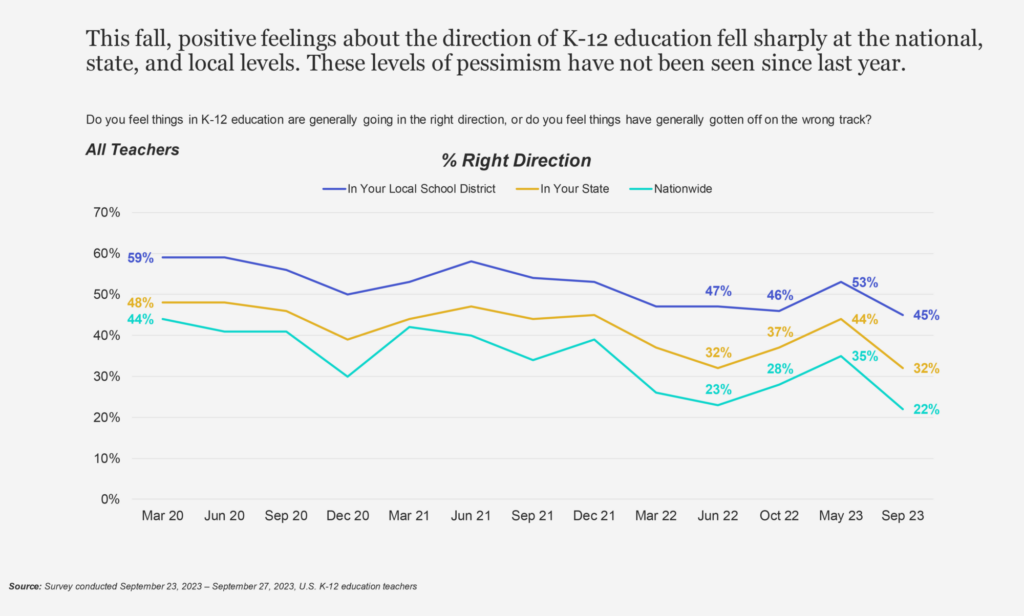
3. More than a quarter of teachers say absences are more frequent this school year. Because of the new data revealing chronic absenteeism rates have risen, we asked teachers whether they feel absences have been more or less frequent this school year compared to last school year. While 28 percent of teachers do feel that absences are more frequent this school year, roughly half of teachers feel it is about the same as last school year. Slightly more than one in five teachers feel absences have become less common this year. District school teachers are more likely than private school teachers to feel that absences have become more frequent.
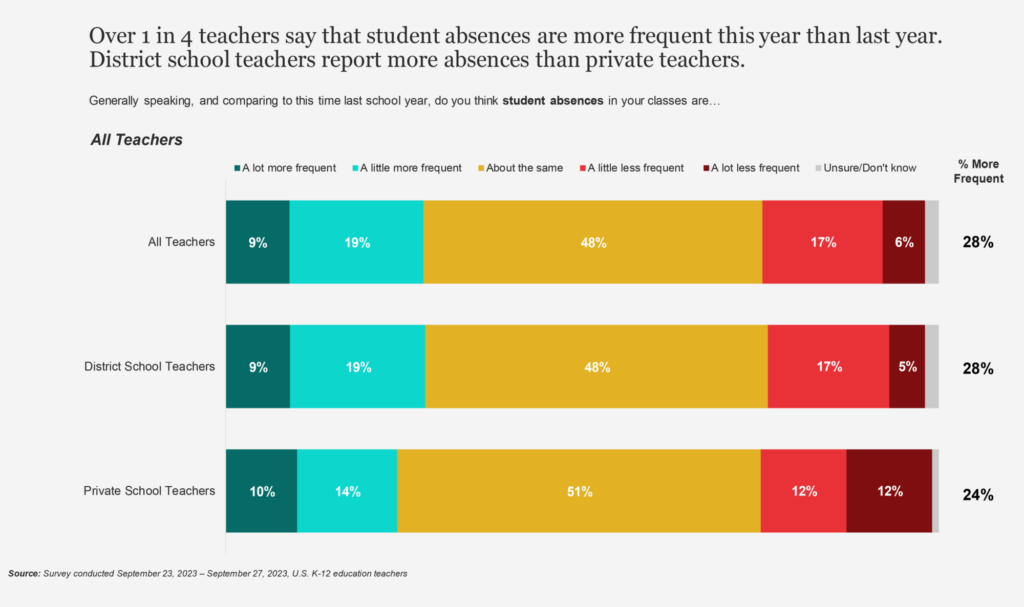
4. Nearly three in four teachers feel cell phone use is harming students’ social-emotional development. In contrast, only 16 percent feel cell phone use is positive for students’ development. Teachers feel much better about students’ use of computers and laptops, however. Roughly 75 percent of teachers feel that computers and laptops have had a positive effect on students’ learning experience.
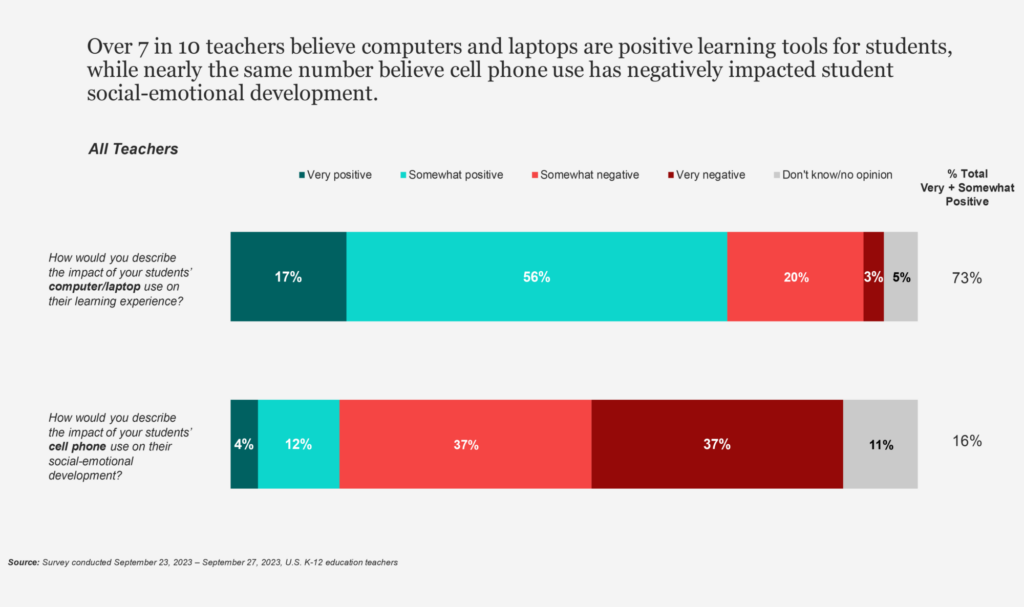
5. The majority of teachers are concerned about social media having a negative effect on students’ mental health. Nearly half of teachers feel requiring students to leave their personal devices in their lockers would help reduce social media usage. Interestingly, 56 percent of teachers say their school allows students to use cell phones, while 45 percent of teachers are allowed to establish their own classroom rules for cell phone use.
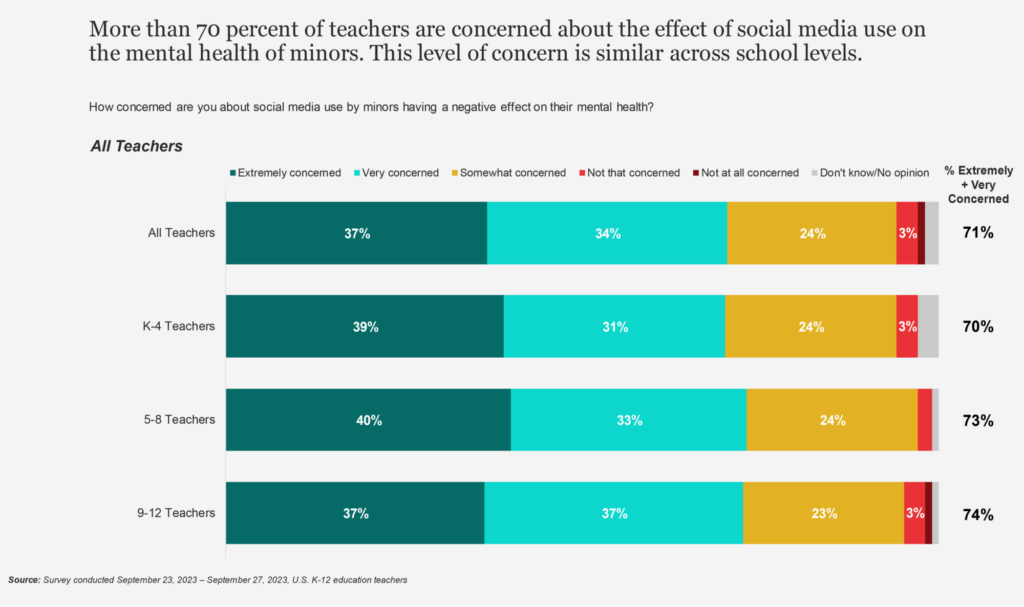
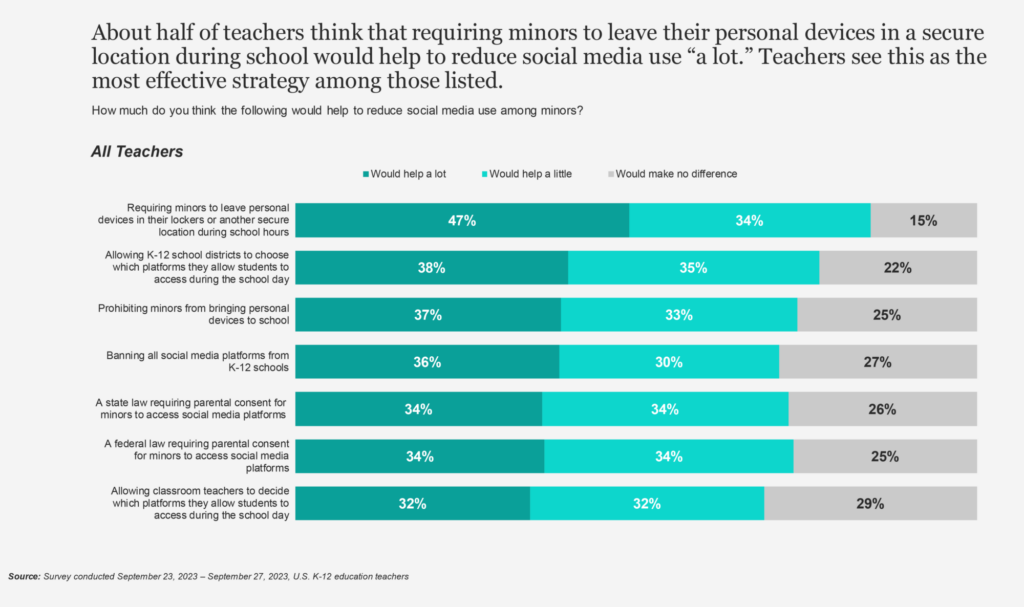
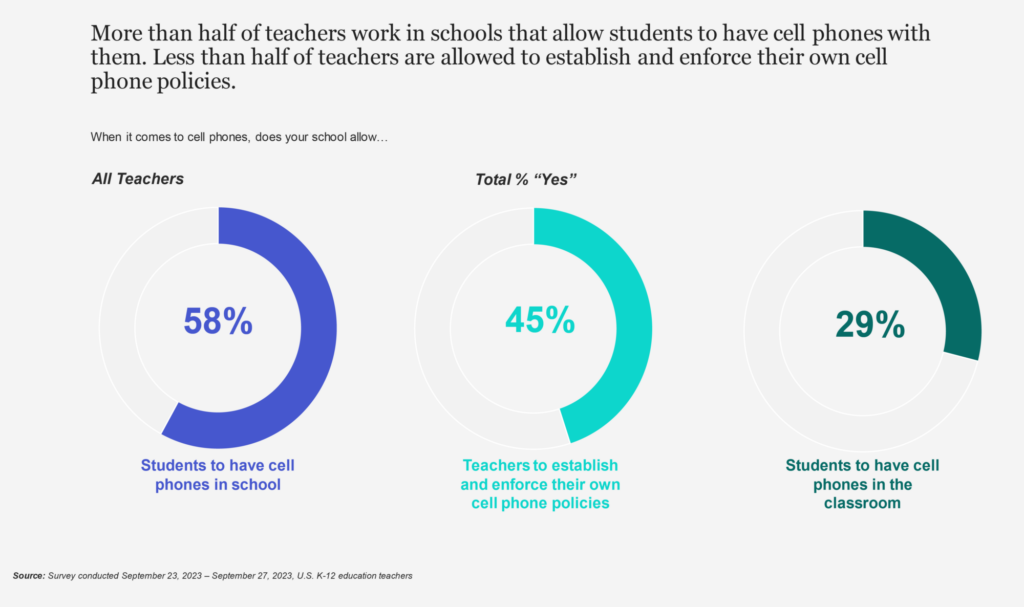
6. Roughly one in five teachers report facing situations of artificial intelligence-based plagiarism or cheating. For the first time in our polling, we asked teachers about incidents of cheating or plagiarism using AI. While only 17 percent of teachers say they have personally dealt with cheating by use of AI, 20 percent say they know of instances occurring within their school. Even with the risk of AI being used for academic dishonesty, roughly 40 percent of teachers support using AI as a learning tool. Middle school and high school teachers are more receptive to the idea than elementary school teachers.
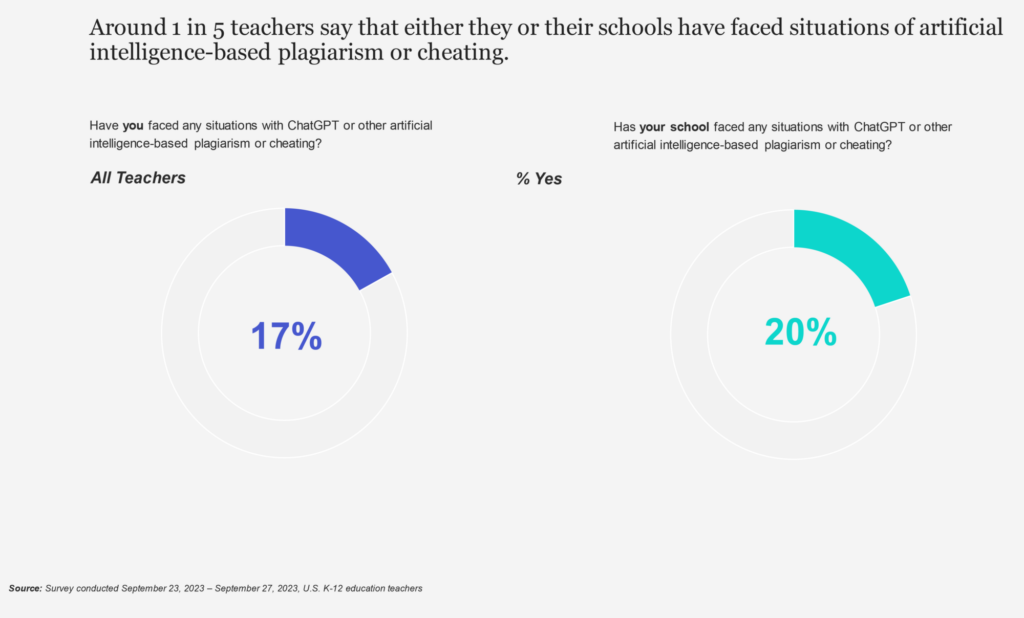
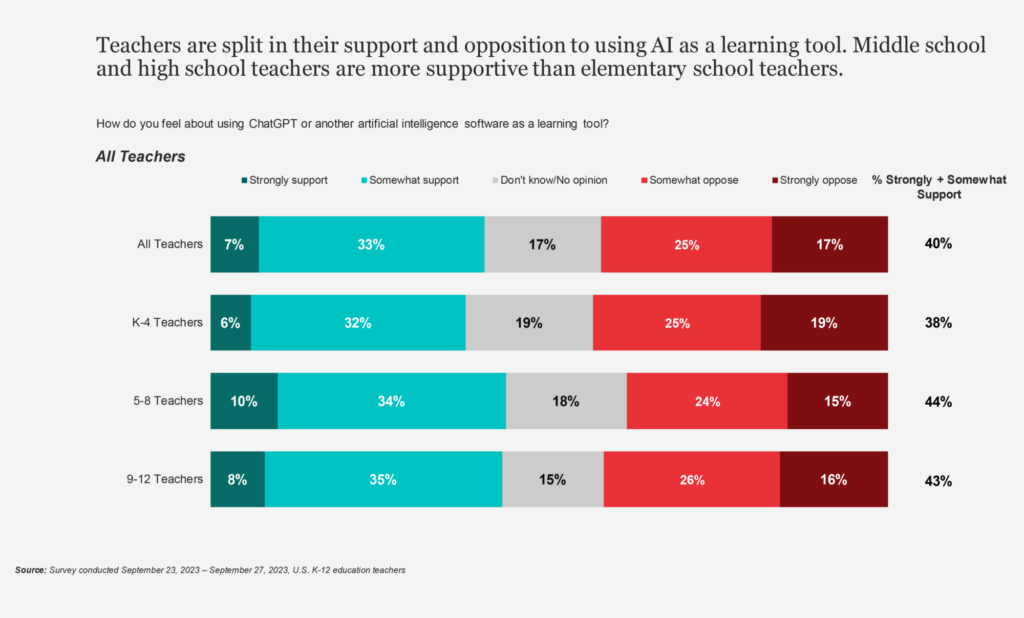
7. Since spring, fewer teachers feel their students are progressing very well academically, emotionally, or socially. Less than one in four teachers feel their students are progressing very well academically (22%), emotionally (16%), or socially (17%). District school teachers feel slightly worse about their students’ progression than all teachers on average. Conversely, private school teachers are much more optimistic overall about how their students are progressing. Academic progression highlights the biggest disparity between the different types of teachers. Private school teachers (42%) are much more optimistic than teachers generally (22%), and especially district school teachers (18%) on the academic progress of their students. For context, in the spring, roughly one in three teachers felt their students were progressing very well in those three areas.
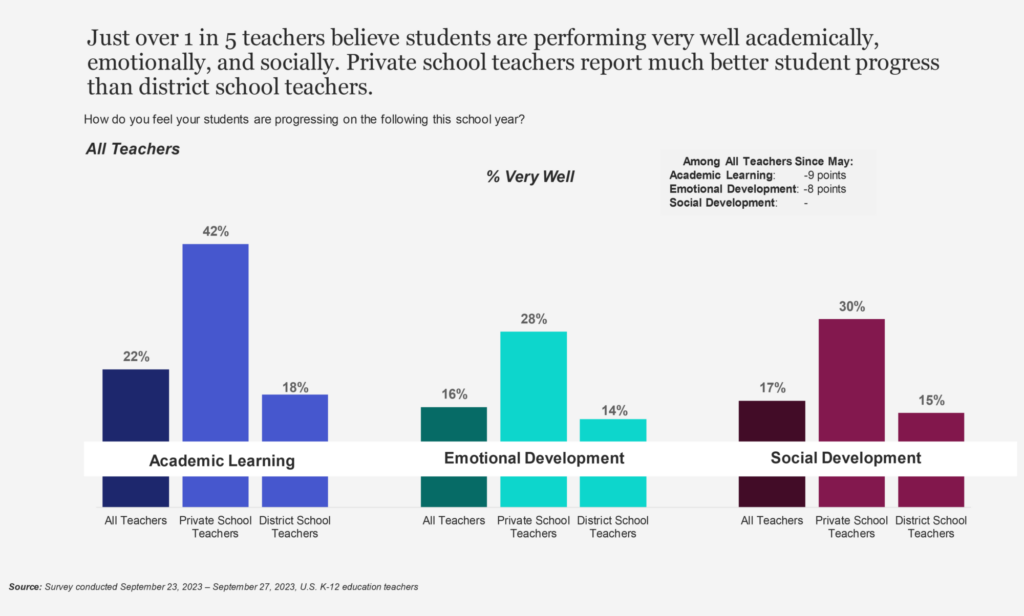
8. Seven in ten teachers feel they are doing “catch-up” academically for their students. For the first time, we asked teachers about academic recovery. Seventy percent of teachers feel they have to help their students “catch up” to get them to appropriate academic standards. Nearly three in four (71%) district school teachers feel they are helping their students recover academically, while 65 percent of private school teachers feel similarly.
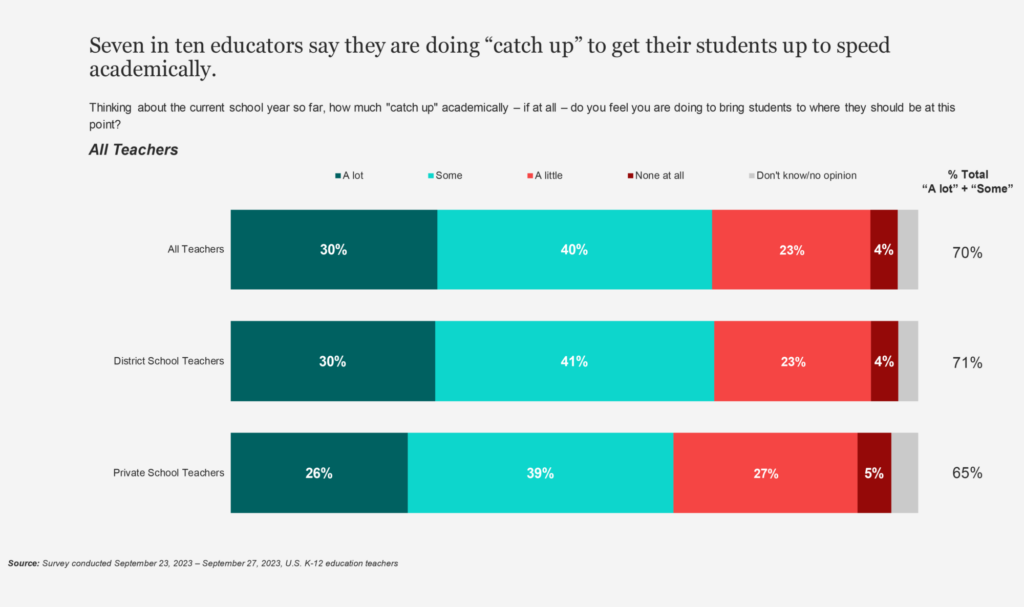
9. Concern from teachers regarding violent intruders entering their school significantly dropped since spring. In May, nearly 60 percent of teachers had strong concerns about the possibility of a violent intruder entering their school. This month, concern among teachers dropped to 35 percent. For reference, 33 percent of teens are concerned about violent intruders. School parents are much more concerned than both groups, with 52 percent reporting feeling worried about violent intruders.
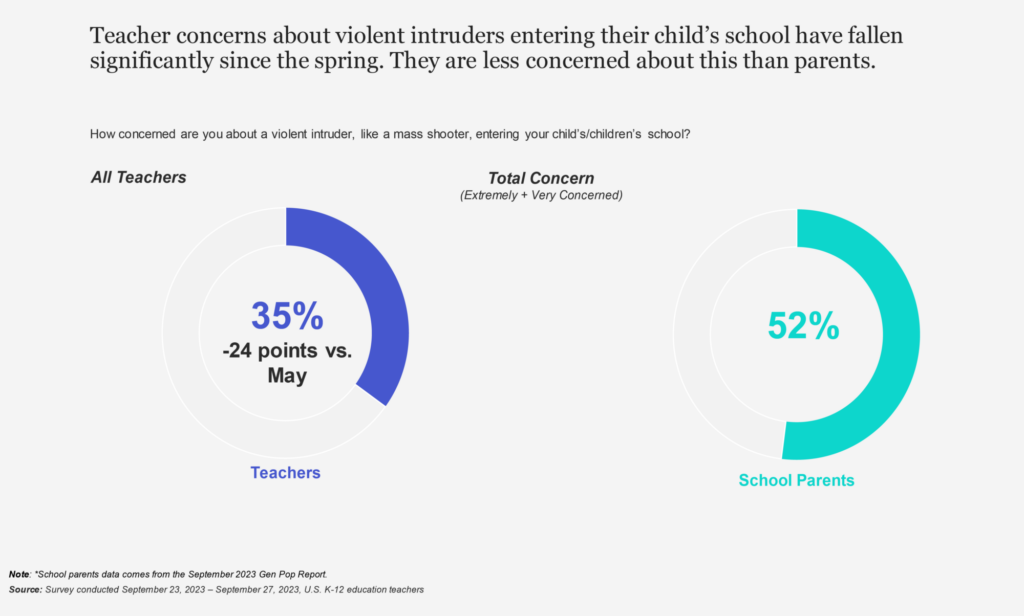
10. Teachers are very supportive of school choice policies, especially education savings accounts (ESAs). While 69 percent of all teachers support ESAs, support for ESAs among private school teachers (82%) is especially strong. Even 66 percent of district school teachers support ESAs. Choice policies like vouchers (44%), charter schools (52%), and open enrollment (62%) are less popular than ESAs among teachers. Private school teachers and teachers with less teaching experience are the most supportive groups when it comes to those policies.
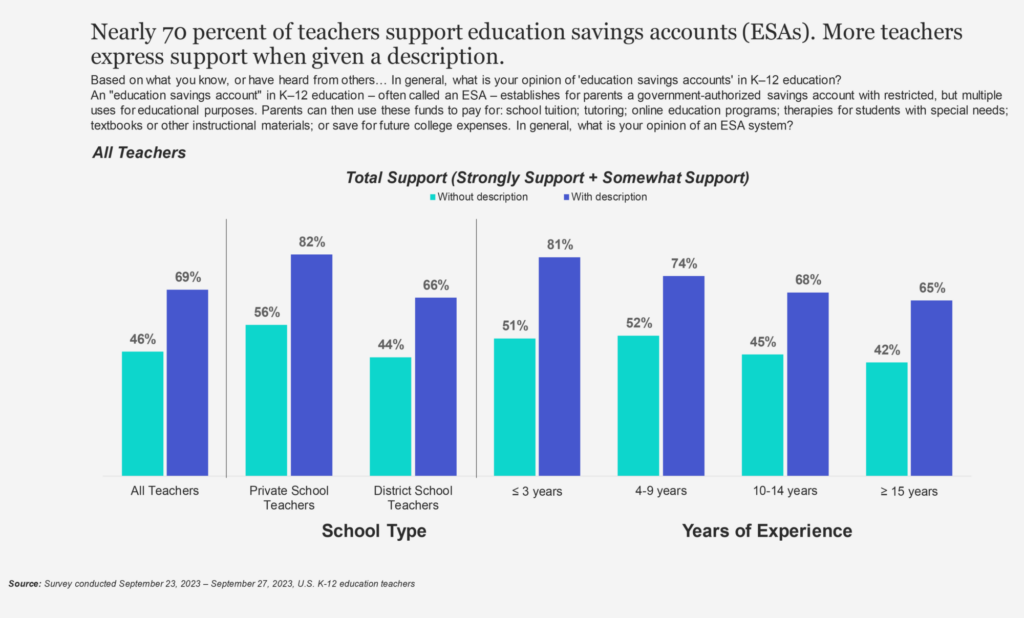
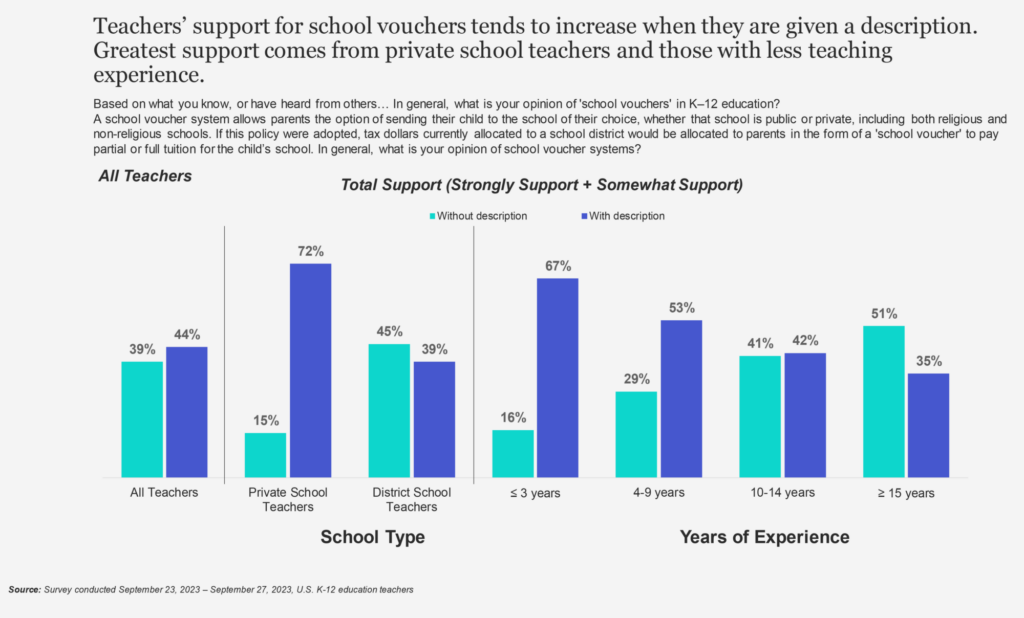
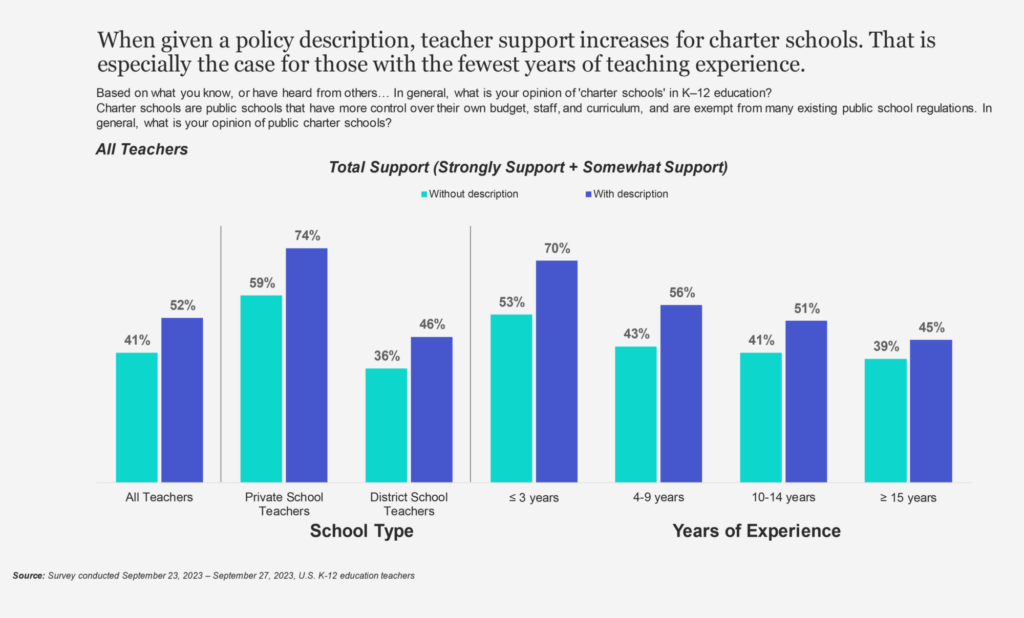
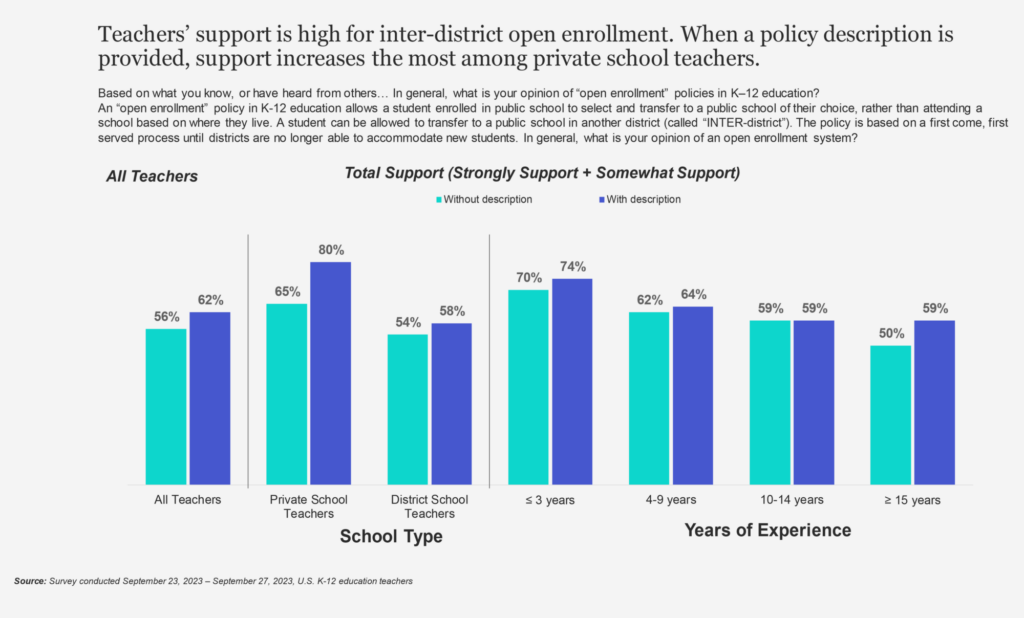
Visit the EdChoice Public Opinion Tracker site to access past reports, crosstabs, questionnaires, and our national and state dashboards. All are updated monthly. We also provide a more in-depth description of our research and survey methods.
Our K–12 education polls archive is updated on a rolling basis, roughly a few times each month. Please don’t hesitate to let us know if we are missing any surveys, or if there are accidental errors.




